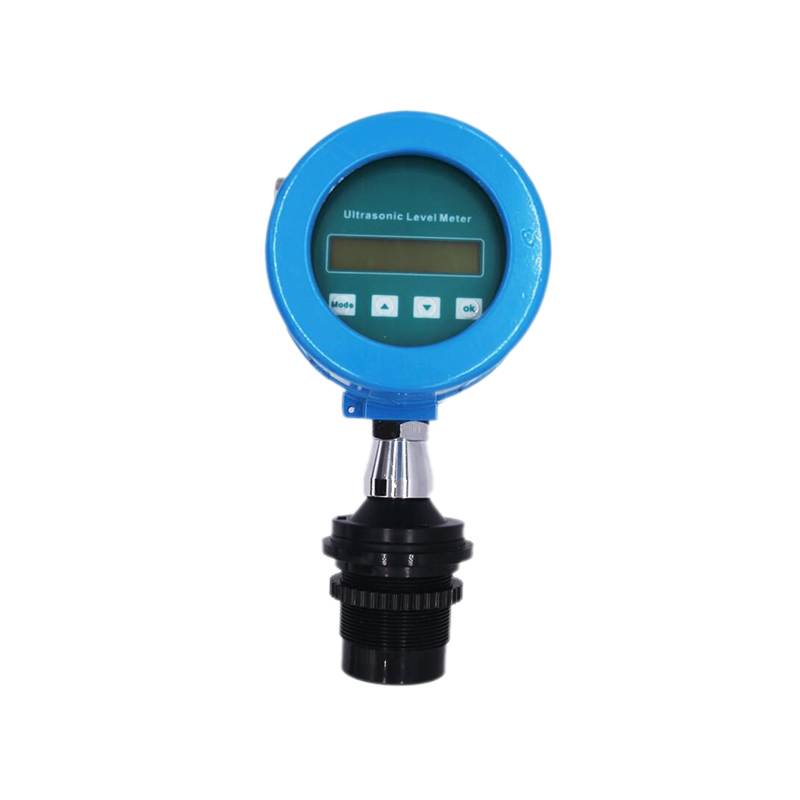Level transmitters typically employ various techniques to compensate for foam or vapor that may be present on the surface of the measured material. Here are some common methods:
Frequency Modulation: FMCW radar level transmitters operate by continuously emitting a radar signal with a frequency that linearly varies over time. This frequency-modulated signal is transmitted towards the surface of the measured material, where it interacts with the substance and is reflected back to the transmitter's antenna. When encountering foam or vapor layers on the material's surface, the radar signal undergoes phase shifts or attenuation due to the differences in dielectric properties between the liquid and the interfering substances. These changes in the radar signal are analyzed by the transmitter's receiver circuitry, which utilizes sophisticated algorithms to extract relevant information about the liquid level while compensating for the presence of foam or vapor. By accurately measuring the time delay and amplitude of the reflected signal, the transmitter can provide a precise and reliable measurement of the liquid level, unaffected by the interference caused by foam or vapor layers.
Signal Processing Algorithms: The accurate measurement of liquid level in the presence of foam or vapor requires robust signal processing algorithms capable of effectively filtering out unwanted noise and extracting meaningful data from the received radar signal. These algorithms typically incorporate techniques such as digital filtering, adaptive signal processing, and pattern recognition to differentiate between genuine level reflections and spurious echoes caused by foam or vapor. By analyzing the characteristics of the received signal, including its amplitude, phase, and frequency content, the transmitter's signal processing circuitry can identify and discard irrelevant information while retaining the essential data related to the liquid level. This advanced processing ensures that the reported level measurement accurately reflects the true level of the liquid, even in challenging operating conditions characterized by the presence of foam or vapor layers.
Multiple Echoes Analysis: Radar-based level transmitters employ multiple echoes analysis to distinguish between the various reflections received from the liquid surface, foam layer, and vapor interface. When the radar signal interacts with the material's surface, it generates multiple echoes due to reflections from different interfaces within the measurement environment. These echoes include reflections from the liquid surface, foam layer, vapor interface, and other obstructions present in the path of the radar signal. By analyzing the time delay, amplitude, and phase relationships between these echoes, the transmitter's processing circuitry can differentiate between genuine level reflections and false echoes caused by foam or vapor. Sophisticated algorithms are employed to interpret the complex echo patterns and extract the relevant information related to the liquid level, enabling the transmitter to provide an accurate and reliable measurement while compensating for the presence of foam or vapor layers.
Dielectric Constant Measurement: Capacitive level transmitters utilize the principle of measuring the dielectric constant of the material to determine the liquid level. The dielectric constant is a physical property that describes the material's ability to store electrical energy in an electric field. Different substances have distinct dielectric constants, which can be exploited to differentiate between them in level measurement applications. Foam typically has a lower dielectric constant compared to the liquid, resulting in a significant difference in capacitance between the foam layer and the liquid. Capacitive level transmitters employ electrodes or probes immersed in the material to measure the capacitance between them. By measuring the capacitance variations caused by the presence of foam or vapor layers on the material's surface, the transmitter can accurately determine the liquid level while compensating for the interference caused by these substances.
Ultrasonic explosion-proof integrated

